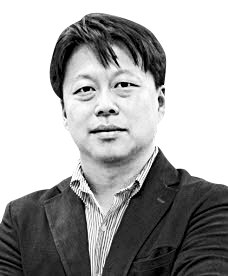How to keep industrial spies at bay

Chang Hang-bae
The author is a professor at the Department of Industrial Security, Chung-Ang University.
As collaboration, intelligence sharing and digital migration increase, so does the risk of technology leaks. That risk is even more prescient amid today’s sprawling rivalry between the United States and China.
Technology leakage differs from typical mishaps in cybersecurity on several grounds.
First of all, it is hard to detect leaks in technology-related information that is stored in electronic files. Second, although the leaks do not take place as often as cyberattacks, the losses can be astronomical. Depending on the gravity of the stolen technology and types of clients, the leakage incident can develop into an international criminal case.
Uninterrupted technology leaks in various forms hurt not only companies, but also industrial competitiveness and public livelihood as well as the national economy, calling for efforts to address the issue in the context of economic security. Sentencing guidelines must be enforced on the criminals liable for such leaks in order to build social consensus around the protection of proprietary technology properties.
Toughening those sentencing guidelines is being explored and discussed. But objective methodology must first be developed to take into consideration investment costs, market losses and opportunity costs for the realistic application of the ruling.
Various support systems must also be institutionalized to protect the organizations and professionals behind strategically important technologies. Investments in technology protection from companies, universities and research institutes should be granted tax breaks. State-backed research and development projects to counter external cyberattacks and internal leaks should be pursued to upgrade the security system standard.
The government must provide economic and non-economic support for technology developers, operators, and supervisors through differentiated security codes according to the technology’s level. National merits should be awarded to technicians by sector and back their activities in industrial technology associations.
They must be given opportunities to lecture and advisors to share their lab and research and development (R&D) experiences. At the same time, selective security management must be applied according to the level of expertise, such as through security education, restriction in contact with foreigners and advisory activities, and binding contracts for dual job positions and confidentiality codes.
Various laws on technology protection, such as the Industrial Technology Protection Act, the Small and Mid-sized Enterprise Technology Protection Act and the Defense Technology Protection Act should be coordinated and consolidated to alleviate the industrial field’s burdens and enhance consistency in industrial security policies and their applications.
Based on integrated law, the state supervisory agency on technologies protection must be singularized so that the regulatory system gains objectiveness through upgraded models for certifying and measuring the maturity of industrial security so that the organization can grow through a self-developed modeling system.
It is also important to groom experts for guarding technologies in industrial fields. They must be able to develop and operate security-related technologies with a deep understanding of the industries that demand their protection. To internalize security capacity within their industries, math, science and technology departments must run mandatory courses on industrial security and breed experts through undergraduate and graduate programs. Active security experts must be kept up to date through retraining programs.
Once hard-attained technologies cannot be returned once they are leaked and stolen, and they lose the opportunity to see daylight on the market. Technology protection policy and system must be addressed in comprehensive context as a part of efforts to attain supremacy in cutting-edge and high-value technologies for national competitiveness.
Translation by the Korea JoongAng Daily staff.










with the Korea JoongAng Daily
To write comments, please log in to one of the accounts.
Standards Board Policy (0/250자)